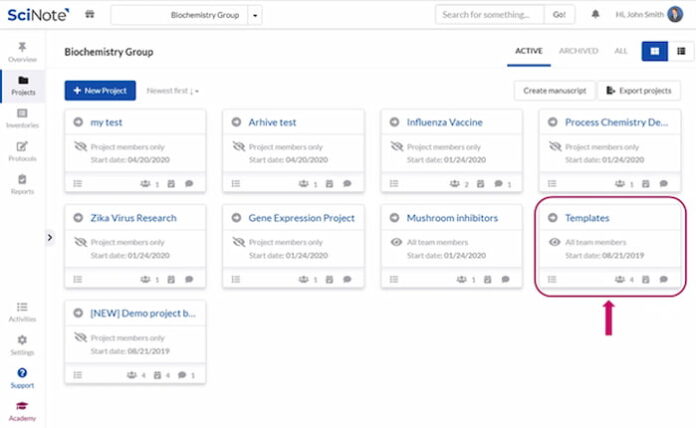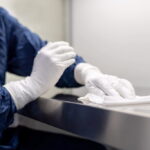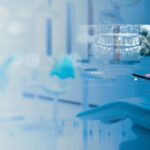In the scientific world, with each and every scientific advancement the pressure to produce timely and accurate results has never been greater. Whether it’s the academic corridors filled with researchers chasing the next big revelation or biotech corporations seeking innovations, there’s an ever-growing quest to refine and escalate their laboratory outputs. It’s understandable that in the complex mosaic of daily tasks, activities, and experiments that constitute regular lab operations, some seemingly simple yet transformative strategies might get overshadowed. Fortunately, you’ve come to the right place. But worry not! This article provides some helpful advice on how to boost your lab’s productivity.
1. Cultivating a Culture of Continuous Learning
Science and technology are ever-evolving and the only request they have for the people to indulge and work on it to keep evolving along with them. This is because innovation and upgradation often come when one is updated not just with the basics and old knowledge but also with the latest trends and upgrades. Just like a student they also have to learn new things every day. Here is how to approach this concept:
– Start with a Brief: Often, it is observed that inefficiencies arise because of a knowledge gap. Embrace a culture where learning is ongoing. Impart knowledge and teachings from wherever possible, no information is useless should be the motto.
– Workshops & Seminars: As said above this field of work is evolving and this makes it necessary to hold workshops on a regular basis. Along with teaching the team new ideas, these seminars will also teach them brand-new skills that they may not have had previously. Along with the most recent equipment, these seminars also aid in the introduction of new practices. All of these procedures will keep the team current and sharp, improving efficiency.
– External Courses: Arranging in-lab workshops sometimes won’t be enough, as there are many things that might not be able to be covered or arranged. In these cases encourage team members to attend external workshops. Introduce them to outside courses or webinars that are relevant to their area of expertise or may have an impact on how they perform in the lab. They will learn new skills from this exercise, but it will also help them build stronger networks.
– Knowledge Sharing: Simply acquiring knowledge should not be the goal of an individual. Knowledge sharing is also important. This will help us all grow as a society. For this purpose create or introduce a platform within the lab which is accessible to all the team members. This platform has to be such that all the team members are able to share their knowledge or new information in the form of articles, research papers, or findings. This way the work will be shared, which can be reviewed and discussion on the same should also be encouraged.
2. Embracing Digitalization and Automation
In the contemporary digital era, technology is ingrained in practically every aspect of our life, and in some ways, it has essentially taken over. Incorporating these technological advancements into labs will benefit it beyond imagination. This change has the potential to drastically alter how labs are run.
– Adopt an Electronic Lab Notebook Software: It’s about time to lose the conventional ways of pen and paper. No matter how nostalgic or homely it makes you feel, it is not capable of meeting the modern scientific endavors. It’s about time that you switch to ELN. Electronic lab Notebook software can streamline data entry, storage, and retrieval processes, reducing the time spent on administrative tasks. Here are some of the benefits of introducing ELN:
– It Saves Time: Flipping through dozens of notebooks just to find something important that you wrote back in the day. ELN helps to organize the data which can be quickly retrieved when needed.
– Research Data Reliability and Protection: With traditional ways of data entry and bookkeeping the risk of data reliability is often seen and one of the main concerns is about the protection of the data. ELN helps to overcome those problems. ELN will help to auto backup the data and incorporate data integrity along with the in also implements high-level security measures. This keeps the data well protected.
– Automation Tools: Investment should be made in equipment that helps to automate repetitive tasks. These tasks often take up the researcher’s time and keep them away from doing the actual research work. Therefore it is advisable to Invest in equipment that can automate repetitive tasks. It not only lowers human error but also frees researchers to concentrate on more difficult tasks.
– Regular Software Updates: The digital realm is ever-evolving. To fully utilize software tools, assure the highest levels of security, and ensure maximum performance, it is essential to keep them updated. Regular software refreshes provide the assurance of staying current in a rapidly advancing tech landscape.
3. Efficient Inventory Management
One of the unsung heroes in a lab’s efficient operations is undoubtedly a meticulously managed inventory. It serves as the bedrock ensuring that workflow continues like clockwork, devoid of any hiccups or unnecessary halts. Ensuring that every item is at its designated place and available when needed isn’t just about the organization—it’s the foundation of continuous and seamless research processes.
– Regular Stock Checks: It’s not enough to just have an inventory; its pulse needs to be checked with consistency. Instituting a routine where stocks are examined and replenished ensures the lab machine hums without interruption. Without such vigilant oversight, one may find themselves stalling crucial tests or experiments simply because of depleted supplies.
– Centralized System: Think of your inventory system as the brain of your lab operations. By choosing a centralized system, you can be confident that you will always be aware of the location, amount, and even the expiration date of every item. This comprehensive viewpoint guarantees quick decision-making, prevents stock-out scenarios, and enables prompt reordering, preventing possible disasters.
– Clear Labeling: While this might seem rudimentary, the importance of clear labeling cannot be overstated. Whether it’s chemicals that might be hazardous or just regular supplies, clear and concise labels aid in immediate identification. The time team members could normally spend looking for products is substantially cut down by this technique, ensuring they concentrate their important time on meaningful study rather than potential errors.
4. Streamlining Communication and Collaboration
The adage “Teamwork Makes the Dream Work” couldn’t be more apt, especially in a laboratory setting where myriad intricate tasks need cohesive execution. The lifeline for ensuring that everyone moves in unison is effective communication, which significantly lowers the likelihood of mistakes resulting from misunderstandings or overlapping efforts.
– Regular Meetings: While ad-hoc conversations are a given in any workspace, there’s undeniable value in structured, regular meetings. These discussions provide an opportunity to examine the specifics of ongoing efforts, spot any hidden problems, and allocate resources as efficiently as feasible. It’s during these meetings that the collective intelligence of a team can be harnessed to troubleshoot issues and ideate innovatively.
– Digital Communication Platforms: As the world becomes increasingly digitized, it’s essential for labs to not lag. Incorporating modern communication platforms like Slack or Microsoft Teams can revolutionize how lab members interact. These platforms not only facilitate real-time dialogues but also provide features for structured discussions, file sharing, and reminders. Such seamless communication channels can significantly reduce response delays, ensuring the momentum of projects remains unbroken.
– Clear Protocols: It’s imperative that everyone in a lab speaks the same ‘language’. Whether it’s the nuances of safety protocols, the intricacies of equipment operation, or the specifics of research methodologies, ambiguity can be a costly error. All team members must work together to ensure that there are clear, understandable, and accessible protocols in place. This reduces the likelihood of disagreements and increases productivity.
5. Regular Maintenance and Calibration
In the vast and intricate world of lab research, where every minor detail holds significance, the upkeep of equipment isn’t just a routine chore. Instead, it’s a deliberate effort to maintain a gold standard in every output. Regular attention to equipment doesn’t only ensure that you get the most accurate results every single time but also extends the life of the tools you’ve invested in, ensuring that they serve you faithfully for years to come.
– Scheduled Maintenance: Think of your major equipment as the robust pillars holding your lab’s edifice upright. Just like any critical infrastructure, these pillars need periodic checks to stay sturdy. Having a pre-planned, cyclic maintenance schedule ensures that equipment is always in peak condition, ready to tackle any task you throw at it. Furthermore, this proactive approach can foresee and mitigate potential breakdowns, safeguarding against disruptive downtimes.
– Immediate Repairs: It’s tempting to brush off minor glitches or anomalies in equipment, thinking they’re trivial. However, these seemingly insignificant issues, when ignored, have a notorious reputation for morphing into severe malfunctions that can cripple operations. Adopting a vigilant mindset where these ‘minor’ issues are tackled head-on, without delay, can save both time and resources in the long run.
– Calibration: Calibration isn’t just a technical process; it’s an assurance of trust in every result the equipment delivers. By religiously calibrating instruments, labs are essentially fine-tuning their tools to resonate perfectly with the standard measures. This ensures that every reading is not just accurate, but also reliable, fostering a bedrock of credibility in the data produced.
6. Time Management and Task Prioritization
In the bustling environment of a lab, where myriad tasks demand attention, the proverb “Work smarter, not harder” holds immense weight. Navigating the dance between meticulous precision and swift execution requires more than just hard work—it demands shrewd time management and astute task prioritization. By harnessing these skills, one can optimize their workflow, catapulting productivity to levels previously thought unattainable.
– Set Clear Objectives: Each sunrise should bring with it a well-defined map for the day ahead. Kick-starting the morning with clear, tangible objectives not only imbues one’s tasks with purpose but also provides a compass, steering every effort in the right direction. This proactive approach ensures that each hour is purposefully allocated, reducing the potential drift towards unproductive endeavors.
– Prioritize Tasks: In the sea of responsibilities, it’s vital to distinguish between the urgent waves and the important currents. Developing an acute sense of which tasks are pressing and which ones can be shelved for later is a skill that comes with practice. By doing this, one not only reduces unnecessary stress but also guarantees that important activities get the attention they require, resulting in their prompt and effective completion.
– Breaks are Essential: While the incessant drive to keep pushing forward is commendable, the significance of taking short, rejuvenating breaks cannot be sidelined. These pauses serve as mental pit-stops, refreshing and recalibrating one’s mind. When encouraged, these intervals can act as catalysts, rejuvenating cognitive faculties, and thereby aiding in sustaining focus, enhancing creativity, and promoting overall efficiency.
7. Foster a Positive Lab Environment
Dive deeper into any thriving laboratory, and you’ll discover that its success isn’t solely based on the equipment or the research being conducted. Instead, it’s largely attributed to the ambiance and the team’s collective spirit. The environment within a lab, infused with mutual respect and enthusiasm, can be the catalyst for astounding productivity and innovation.
– Ergonomic Design: A laboratory, like any workspace, must prioritize the well-being and comfort of its inhabitants. By ensuring that the lab is designed with ergonomic principles in mind, you’re essentially investing in the team’s health and focus. This goes beyond just having comfortable chairs. Think adjustable lab stools, anti-fatigue mats, optimal lighting that reduces eye strain, and well-spaced workstations that allow for fluid movement and collaboration. Such attention to detail can invigorate the team, making long hours feel less taxing and more productive.
– Appreciation and Rewards: Humans, by nature, thrive on appreciation. In the realm of meticulous research and experiments, where efforts might often go unnoticed, it’s pivotal to spotlight and celebrate the hard work. Whether it’s through monthly awards, surprise bonuses, or even simple verbal acknowledgments, such gestures cultivate motivation. More than just an incentive, it instills a profound sense of belonging and reaffirms the value of each team member within the larger lab ecosystem.
– Open Feedback: The most progressive of labs understand the power of open dialogue. Encouraging a culture where feedback—be it praise, constructive criticism, or concerns—is shared openly and without trepidation ensures that the lab environment remains dynamic. Team members become more engaged and productive when they believe their opinions are respected and heard. By facilitating such platforms, labs can address budding issues head-on, fostering a proactive approach to challenges and ensuring the collective morale remains buoyant.
Conclusion
In conclusion, increasing lab productivity does not require working harder; rather, it requires making wise decisions and incorporating procedures that guarantee efficient operations. Every small action helps to increase productivity, from implementing the appropriate technologies—like the Electronic Lab Notebook software—to promoting a happy work atmosphere. As the adage goes, “The sum is greater than the parts.” It’s all about synchronizing these parts effectively to maximize your lab’s output.
Read Also
- Management Reinforcement for Healthcare Providers in a Shifting SystemHealthcare is changing faster than ever. So, providers are feeling the pressure to keep up. New technology, changing patient needs, and constant rule updates make it tough for managers to stay on top. Strong leadership helps teams work better, give great care, and stay happy in their jobs. Here’s how healthcare leaders can strengthen their… Read more: Management Reinforcement for Healthcare Providers in a Shifting System
- Why Effective Disinfection Remains the Foundation of Public HealthFrom hospitals and schools to transport hubs and food production sites, disinfection is central to breaking the chain of infection and protecting community health. The COVID-19 pandemic highlighted how crucial surface hygiene and environmental control are in reducing the spread of harmful microorganisms. Yet, beyond emergency response, routine and validated disinfection practices remain the cornerstone… Read more: Why Effective Disinfection Remains the Foundation of Public Health
- How to Navigate Your Medical Assistant Career PathBecoming a medical assistant can feel both exciting and a little stressful. This job lets you work closely with doctors and other healthcare workers to help patients. But with so many different paths to take, it can be hard to know where to start or how to plan your career. Wouldn’t it be nice to… Read more: How to Navigate Your Medical Assistant Career Path
- Benefits of Enrolling in Botox Training CoursesMany people want to enhance their skills in the beauty field, and one way to do that is through Botox training. With the rising popularity of Botox, enrolling in training courses can set you on a path to a rewarding career. If you are considering this option, you might be curious about the benefits that… Read more: Benefits of Enrolling in Botox Training Courses
- Comparing 2025 Dental Practice Management Software OptionsSoftware Key Strengths Potential Limitations Best For Dentimax • Offers both cloud-based and on-premise/server deployment. • Tight integration between imaging (e.g. X-ray sensors) and practice management, charts, treatment planning, imaging all in one. • Transparent pricing and relatively simple UI/usability; solid for small to medium general practices. • May lack some of the… Read more: Comparing 2025 Dental Practice Management Software Options
- How Pilates Certification Enhances Professional Growth in HealthcareAre you looking for a way to expand your skills and stand out in healthcare? Pilates certification can be a powerful step in your professional journey. It not only helps you understand movement and body mechanics. It also gives you tools to support patient recovery. It also improves mobility, and promotes wellness. Ready to see… Read more: How Pilates Certification Enhances Professional Growth in Healthcare
- Understanding the Legality & Challenges in the Dental Aligner IndustryThe dental aligner industry has grown quickly in the past decade. More people are choosing clear aligners instead of traditional braces because they are less noticeable and often more convenient. While this growth has created new opportunities, it has also raised legal questions and practical challenges. Patients, dentists, and companies are still learning how to… Read more: Understanding the Legality & Challenges in the Dental Aligner Industry
- CPR Skills: Be Ready to Act When It Matters MostEvery year, many emergencies happen where lives are at risk and quick action is needed. One skill that can make a big difference is knowing CPR (cardiopulmonary resuscitation) and first aid. In these moments, knowing what to do can be the difference between life and death. By learning these skills, you protect yourself and become… Read more: CPR Skills: Be Ready to Act When It Matters Most









